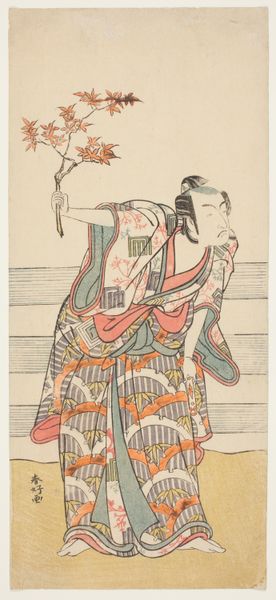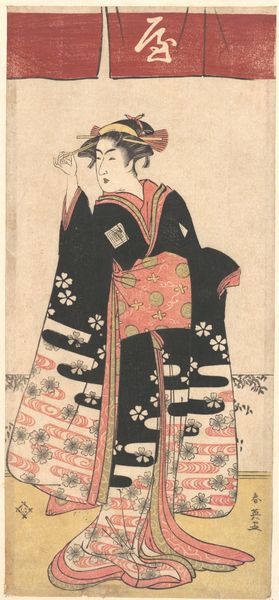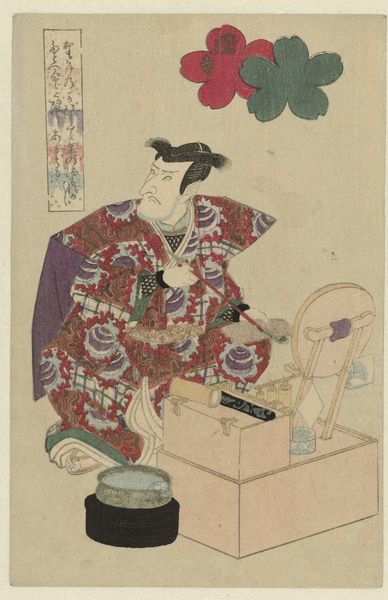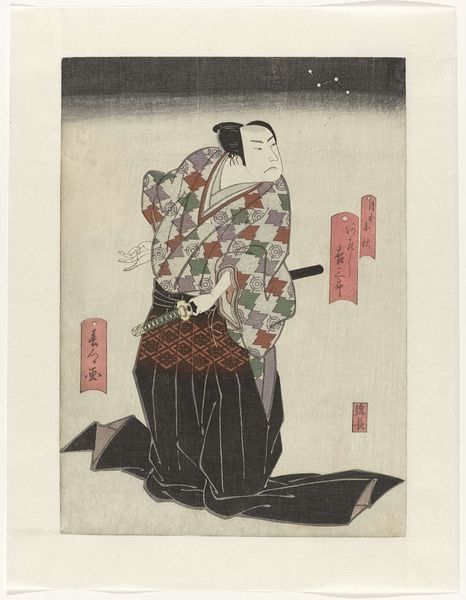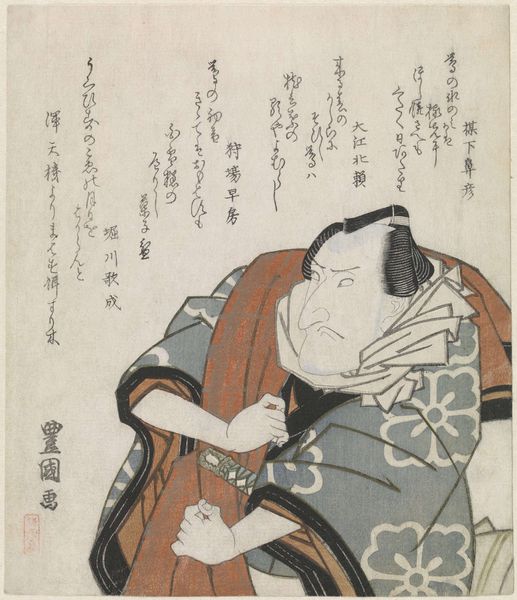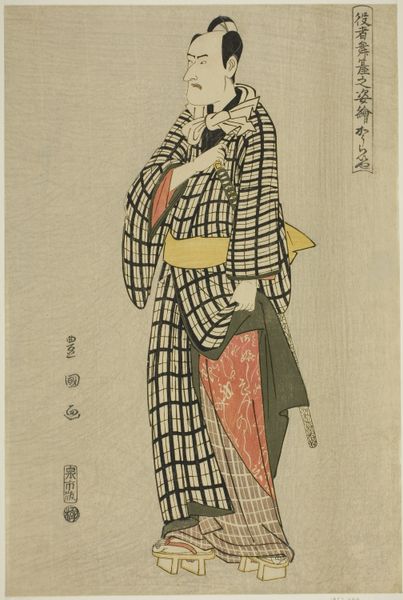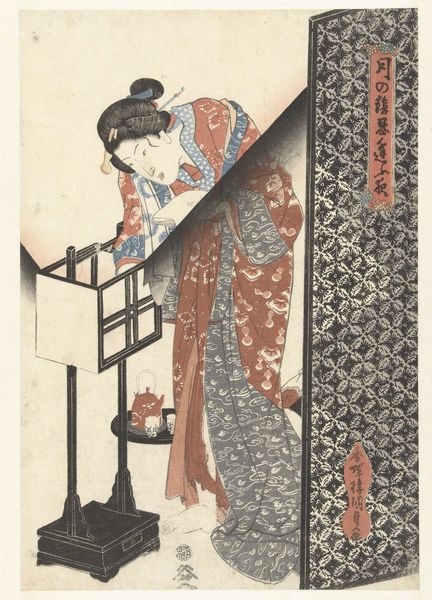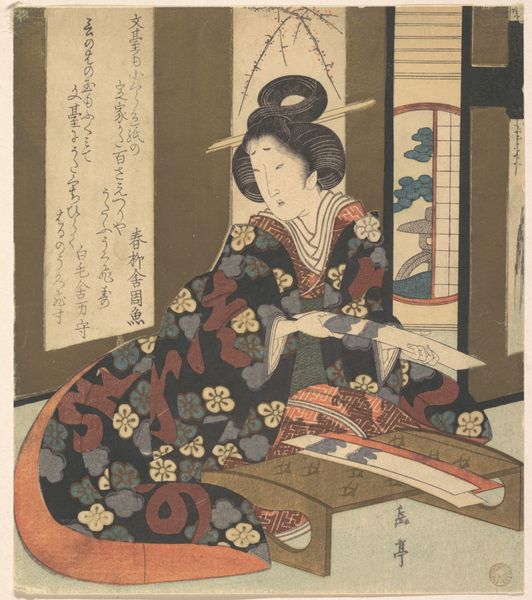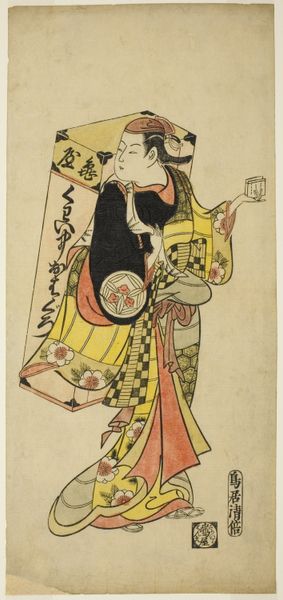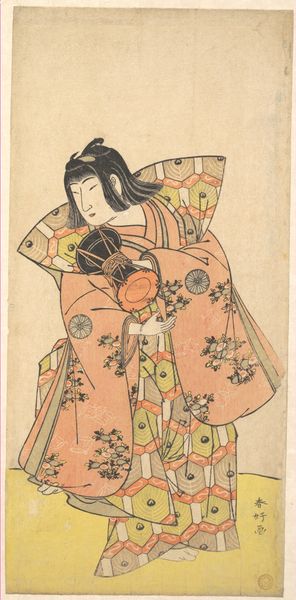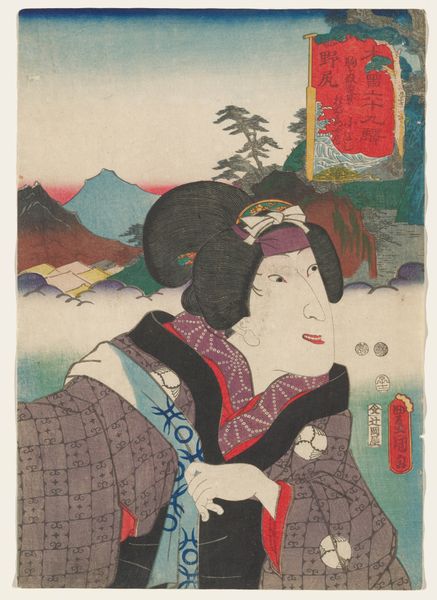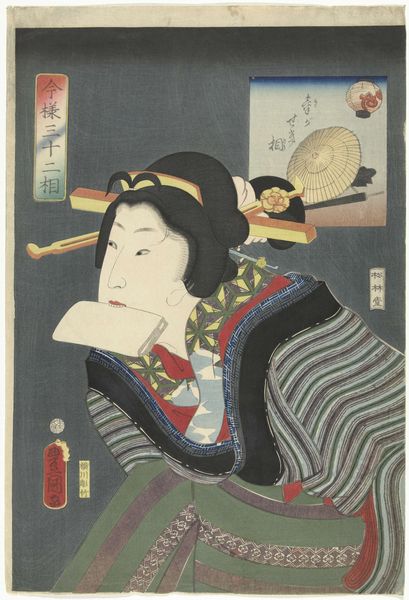
print, woodblock-print
#
portrait
# print
#
ukiyo-e
#
figuration
#
woodblock-print
#
line
Dimensions: height 371 mm, width 246 mm
Copyright: Rijks Museum: Open Domain
Curator: Oh, I feel instantly transported – there's such vibrant energy here, even in the limited color palette! Editor: Indeed. This is "Nakamura Utaemon als Ichikawa Goemon," a woodblock print by Shunbaisai Hokuei, created around 1833. What resonates so powerfully for you? Curator: Well, for one thing, the almost cartoonish intensity. The subject is depicted, apparently, mid-performance. The colors have these sort of deep indigoes and scarlets – colors associated with theatrical drama in that time – all used to enhance a kind of primal, explosive energy. And there's something about that large, almost comical polka-dot pattern… it feels…dangerous. Editor: I agree. The circular motifs resonate. Circles, especially in Buddhist-influenced Japanese art, represent cycles – life, death, rebirth. His robe becomes not just fabric, but an emblem of cyclical destiny. The image pulses with something ancient and yet intensely present. Note also the makeup, highlighting the drama – his tightly clenched expression tells only half the story, his expression augmented through color and line. Curator: Absolutely. And it reminds me of how theatrical performance has historically been a way to both explore and manage social anxieties, fears about chaos, and the unknown. The Kabuki theater provided that space for a highly codified form of transgression, and he carries it out via line, color, and motif. The robe is almost like armor… Editor: Precisely. Even the objects are symbols – his sword and fan indicate, respectively, decisive action and cultural awareness, so in many ways he is representative of this performative, liminal space. And the man behind him? Curator: A counter-image to Utaemon, certainly, to establish a contrast in power dynamic. It also appears that there is another symbol above Utaemon: a festival lantern of some kind, perhaps offering commentary on the larger significance of this play. Utaemon, himself, in costume, but within a larger context that allows the play's theme to become realized on a much larger, societal level. Editor: Indeed. The image vibrates on so many levels, echoing both cultural continuity and the fleeting passion of performance. A vivid expression of Japanese visual culture, immortalized on paper. Curator: It is. Looking at the image has now led me on so many intriguing thought threads.
Comments
No comments
Be the first to comment and join the conversation on the ultimate creative platform.
